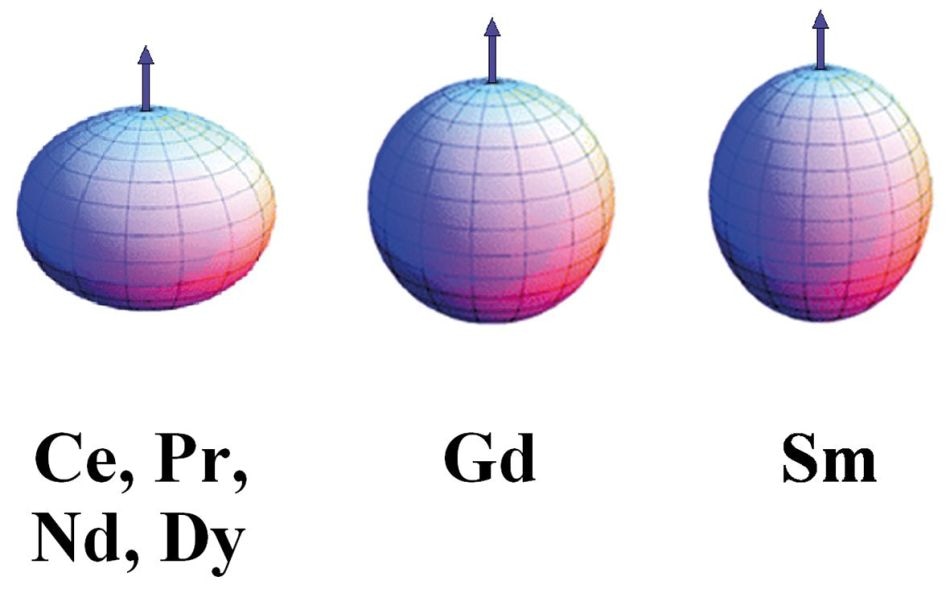Oct 13 2016
 Representation of the magnetic anisotropy of single ions contained in the rare-earth components of the magnets in the study. Credit: EPJ Plus
Representation of the magnetic anisotropy of single ions contained in the rare-earth components of the magnets in the study. Credit: EPJ Plus
Loss of magnetization in permanent magnets can be a real concern for physicists. In 1983, Sumitomo, a Japanese company, developed the most powerful magnet available, offering ten times more magnetic energy compared to the earlier types.
These magnets are an integration of materials such as transition metals and rare-earth metal, and are known as RE-TM-B magnets. A recent issue of the journal EPJ Plus presented a study highlighting that a Russian team is currently pushing the boundaries of magnet design.
This team have developed techniques that help to counter the spontaneous loss of magnetization, based on their knowledge of the fundamental physical phenomenon.
Roman Morgunov from the Institute of Problems of Chemical Physics at the Russian Academy of Sciences and colleagues have recently produced a simple additive-based technique for guaranteeing the stability of permanent magnets over time, without any loss to their key magnetic characteristics
The authors adjusted the chemical composition of a RE-TM-B magnet in order to design magnets capable of retaining their magnetic stability. Their method involves inserting limited amounts of Samarium atoms at random places existing within the crystalline sub-lattice of the rare-earth component of the magnet.
A multi-fold increase in the stability of the magnet was observed over time along with as less as 1% Samarium. The use of such a low quantity of additives to stabilize the magnet prevents the magnetic properties requiring adjustment.
The authors assumed that this result is connected to Samarium's symmetry. It varies from the crystalline structure of Dysprosium atoms, which is included into the composition of the magnet’s rare-earth component. This is due to the fact that the potential barriers dividing the magnetization states of varied energies are improved by the disrupted symmetry.
Upcoming developments of this work will mostly concentrate on identifying the discrete magnetization jumps, which are elementary events initiating the reversible magnetization, resulting in loss of stability.